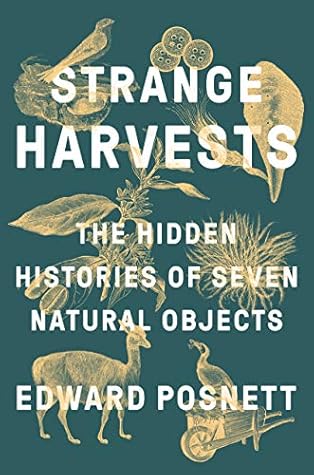More on this book
Kindle Notes & Highlights
Read between
October 18 - November 21, 2019
It had spread from Ethiopia to Yemen, Cairo, Damascus, and Mecca, but had yet to transition from a gateway to the mystical to the global stimulant of capitalism sought by merchants and writers including Daniel Defoe.
Since the 1990s, a school of free market economics, calling itself enviro-capitalism, has argued that an effective way to conserve nature is to monetize it. In this light, the trade in eiderdown, birds’ nests, and even civet coffee could be seen as a great success:
I once read about an Andean myth that tells that the Incan emperor wanted to meet a girl from a village who was desired by all the men of the region. Her parents did not want her to meet the Inca and so they transformed her into a vicuña. Bewitched by her beauty, the Inca would visit her every day, until she was killed by his jealous wife, who turned her skin into a dress. I’d think of this story when I spoke with the vicuñeros, who used a language to describe these creatures that was more befitting a human being than an animal.
The vicuña cannot speak, but biologists have tried to understand what these creatures feel when they are rounded up and shorn, measuring their rectal temperature, heart and respiratory rates, creatine kinase levels, and plasmatic cortisol concentration. According to Cristian Bonacic, a Chilean ecologist who developed guidelines for live-shearing of camelids back in the 1990s, the roundups and shearing can cause acute stress
“To be successful at hunting,” Wheeler told me, “you have to learn what an animal is like, how it adapts; you have to know everything about it, where you are going to find it, how many males, females, what have you—it requires very intricate knowledge.”
Even if Francisco Luna got what he wanted, and the demand for tagua spiked, I found it hard to believe that those gains would eventually trickle down to those who harvest the nuts; they would remain captured, coagulated in the pipeline, by exporters, as in every other commodity chain in existence.
You could take the objects, arrange them in different orders, but the patterns they formed were always the same: to follow each object was to trace the flow of a liquid that, having welled up like oil at the harvest, flowed outward in channels, coagulating in distant pools, from offshore accounts to country houses. “For every producer I have known it’s been like that,” Henrik said.
According to Garcilaso de la Vega, the guano-producing birds were protected by the Incas; those who killed them were severely punished. But during the Guano Age there was little consideration of the capacity of living birds, whom Coker called the “innocent agents in the production of the mines of wealth.” Recounting this history, a strain of anger and frustration runs through his writing. He excoriated earlier travelers, such as Humboldt, who ignored or underestimated the capacity of living birds to produce guano. “Had Humboldt given correct information,” he lamented, “it might earlier have
...more
A series of images by the renowned Brazilian photographer Sebastião Salgado show the Serra Pelada mine in Brazil, 270 miles south of the mouth of the Amazon. In 1979 a local girl found six grams of gold in a local river, leading to one of the largest gold rushes in the country’s history. Thousands descended on the mine in the hope of getting rich, turning it into an anthill. “No one is taken there by force,” recalled Salgado, “yet once they arrive, all become slaves of the dream of gold and the need to stay alive. Once inside, it becomes impossible to leave.” Like those miners in Brazil, the
...more
Haber-Bosch process
The remarkable discovery of these two chemists solved the pressing problem of how to feed our rapidly growing population, but it also unleashed a series of unintended consequences, from the development of explosives to the widespread eutrophication of waterways, caused by algal blooms.
in 2004 it was estimated that fertilizer production was responsible for up to 1.2 percent of all anthropogenic greenhouse gas emissions.
As Gregory T. Cushman points out, by 2000 the entire quantity of nitrogen extracted by Peru’s guano and nitrate miners in the nineteenth century could be synthesized by Haber-Bosch plants in a mere ten days.
there is little the guardians can do about it. Since the 1950s, Peru’s fishing industry has grown exponentially to become one of the country’s most profitable. Countless purse seiners patrol the waters around the guano islands, harvesting the birds’ food, the anchoveta, most of which is processed into fishmeal to feed livestock.


